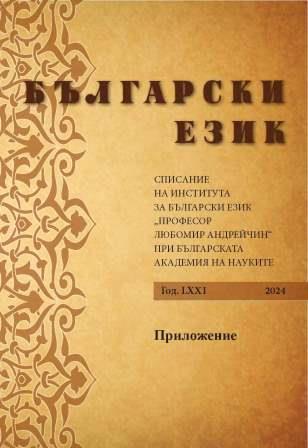Фонологични процеси в усвояването на плавните съгласни р и л от деца, овладяващи славянски езици (по данни на проф. д-р Иван Георгов и съвременни данни)
Phonological Processes in the Acquisition of the Liquid Consonants R and L by Children Acquiring Slavic Languages
According to Prof. Dr. Ivan Georgov and Contemporary Data
Author(s): Yuliana StoyanovaSubject(s): Language studies, Language and Literature Studies, Theoretical Linguistics, Applied Linguistics, Phonetics / Phonology, Philology
Published by: Институт за български език „Проф. Любомир Андрейчин“, Българска академия на науките
Keywords: phonological processes; early language acquisition; liquid consonants r and l in Slavic languages
Summary/Abstract: The report is devoted to phonological processes in the acquisition of liquid consonants r and l in early childhood (up to 3 years) by children learning Slavic languages. The starting point of this research is a publication by Prof. Dr. Ivan Georgov from the beginning of the last century (1913). The thesis of the Bulgarian researcher was that up to the age of three, children mastering Slavic languages regularly replace r with l in certain phonological positions due to their similar place of articulation (both are alveolar, differing only in the manner of articulation: r is vibrant, whereas l is lateral). The report com-pares Georgov's Bulgarian data with contemporary empirical material: contemporary Bulgarian data excerpted from author’s own corpus as well as Polish and Russian data taken from the CHILDES international database). The results point to two main strategies in the acquisition of the vibrant consonant r by children speaking the three Slavic languages: First, a dominant substitution of r with l. This strategy was followed by the Polish children (thus emphasizing the relevance of the conclusions made by Georgov more than a century ago). Second, dominant elision of р (r) along with limited cases of substitution by means of л (l) and (or) й (y). This strategy was followed by the Bulgarian children from the author’s contemporary corpus and by the Russian subject. The differences in the two strategies are explained in the light of the changes in our language over the last decades.
Journal: Български език
- Issue Year: 71/2024
- Issue No: Special
- Page Range: 198-212
- Page Count: 15
- Language: Bulgarian

